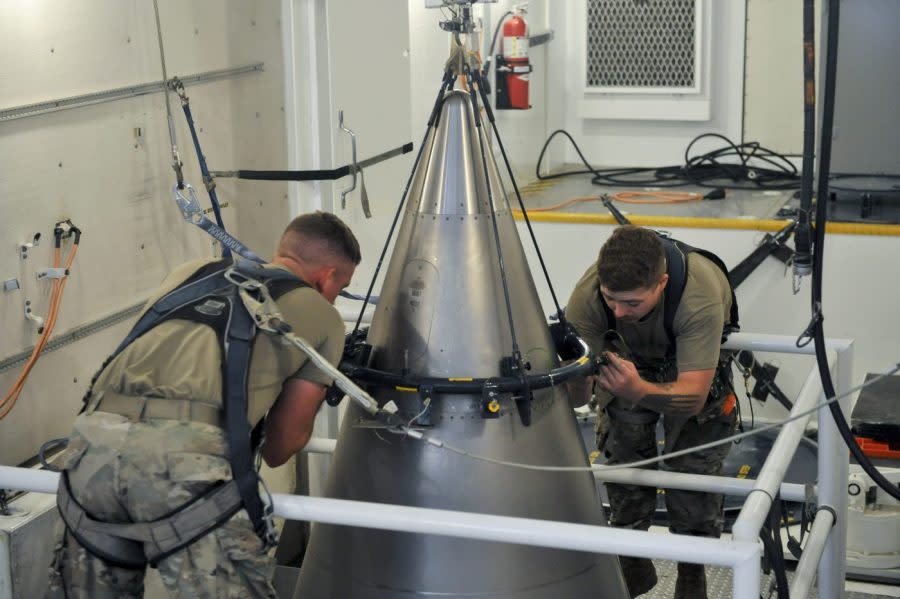Sentinel missile test flight delayed by 2 years until 2026

The first test flight for the Sentinel nuclear missile is delayed until 2026, a two-year setback for the next-generation intercontinental ballistic missile (ICBM) and the latest sign of trouble for the program struggling with high-cost overruns.
Air Force documents for the fiscal 2025 budget request indicate that Sentinel will have its first developmental test flight in February 2026, a delay from what was expected to be an initial testing this year.
The Air Force said in a statement to The Hill that it “was delayed due to increased lead times for guidance computer components.”
“While first flight will occur later than initially planned, it is not on the critical path,” the spokesperson said.
Northrop Grumman, the contractor for Sentinel operating off an initial $13 billion contract, has conducted some preliminary tests for components for the missile. Those have been successful, according to the company.
The program is facing intense scrutiny after overrunning its initial cost projections in January by 37 percent, triggering a Nunn-McCurdy Breach, which means the secretary of Defense must now step in to review it.
The program is now estimated to cost about $131 billion, and while it was initially going to field around 2030, that is also expected to be delayed by at least two years.
The Air Force argues that Sentinel is vital to national security and has pledged to fund the program and make any trades necessary to achieve that goal.
The 2025 budget request includes more than $3 billion for Sentinel. Budget documents show a critical design review for the program is expected by March 2026, which would indicate the program’s maturity level and whether it is ready to proceed toward production.
A full system functional test is expected in 2027, while a system qualification phase to ensure reliability would occur in 2029.
With costs soaring, some members of Congress are now asking questions about how the Air Force came up with its initial cost projections and are urging a greater investigation of the program.
Sentinel will replace the 400 Minuteman III ICBMs scattered across the rural Western U.S. in underground silos. Most of the rising costs are tied to the vast real estate part of Sentinel, which includes constructing new buildings and communication lines.
The Minuteman III missiles are more than 50 years old, and the Air Force says it can no longer keep life-extending them, making a full modernization necessary.
The U.S. is pushing to modernize its entire nuclear triad, from the ICBMs to bomber planes and submarines, in an effort expected to cost more than a trillion dollars.
For the latest news, weather, sports, and streaming video, head to The Hill.


